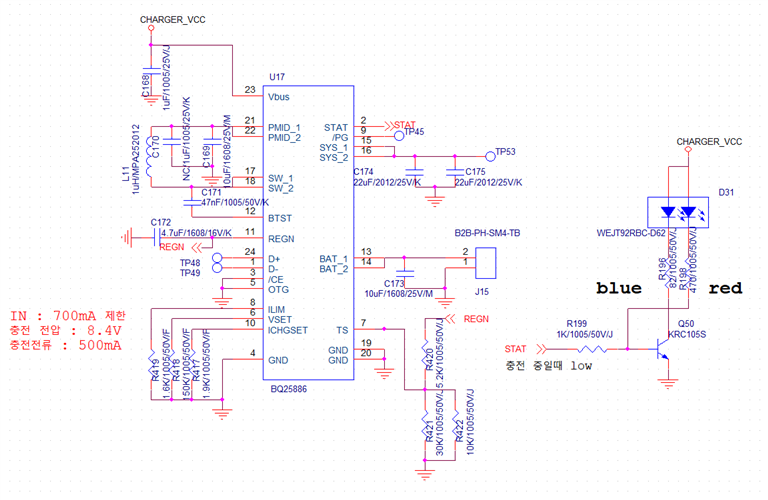Dear TI experts,
My customer drew their first schematic with BQ25886. Could you review the schematic first?

and here are more questions ;
1. my customer will not use thermistor. Is it okay to float TS(7) pin? or just connect resistors like the schematic above?
2. My customer will not use OTG pin. Is it okay to connect OTG pin to GND? or use specific value of resistor?
3. My customer will always active BQ25886. How about \CE pin? datasheet says \CE pin is internally pulled low with 900kohm resistor. in this case, Can I just float \CE pin?
4. My customer also will not use USB communication, only will use 5V adapter. In this case, is it okay to float D+ and D- pin?
5. Is PG pin only indicates about input source, not charging/discharging status? then my customer will not use PG pin, as float. please confirm it.
Best regards,
Chase

